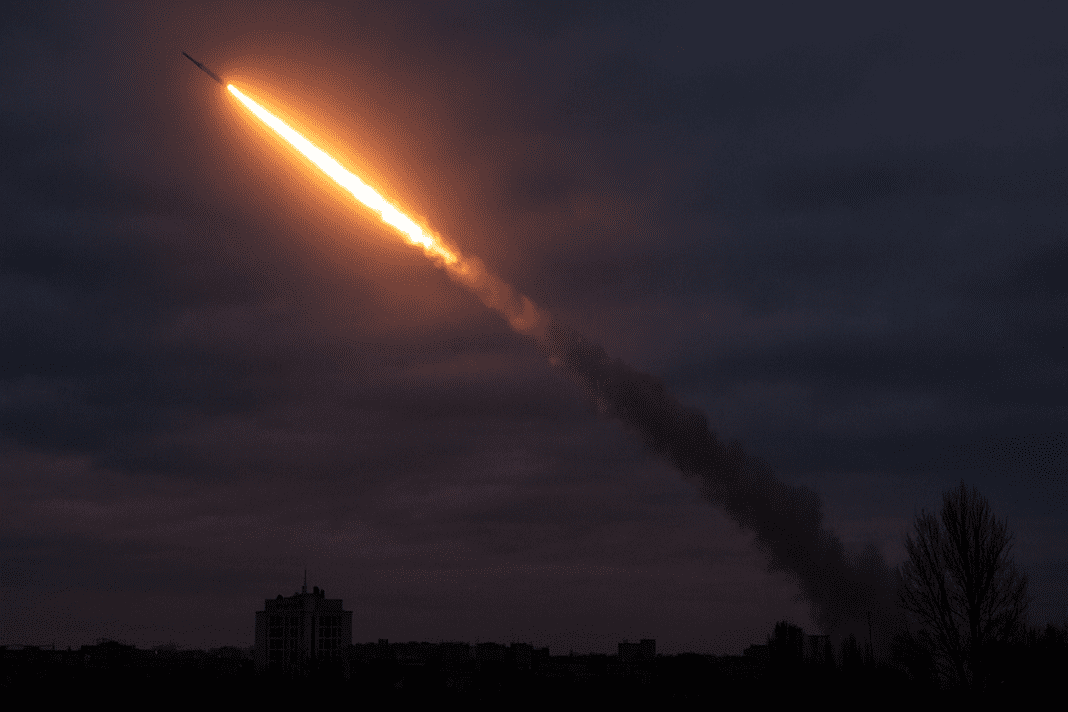Ukraine endured another frightening night as Russian forces launched a wide and coordinated attack using Shahed drones, cruise missiles, and the high-speed Kinzhal missile. The assault began late on Tuesday and continued into Wednesday morning, putting millions of people across the country on constant alert.
Shahed Drones Spread Fear Across Multiple Regions
The first wave came from Shahed drones, which are small, unmanned aircraft packed with explosives. They fly low and fast, making them very difficult to stop. On the night of November 18, Ukrainian Air Forces reported Shahed drones over Sumy, Poltava, Chernihiv, Kharkiv, and Mykolaiv regions.
Kharkiv suffered one of the worst impacts. A supermarket was destroyed, fires broke out, and many buildings and vehicles were damaged. Dozens of people needed help and evacuation. For many families, the sudden attack from Shahed drones in the dark created panic and confusion.
The threat continued past midnight. At around 03:20 Kyiv time, more Shahed drones were detected flying across various regions, including parts of western Ukraine. Air-raid sirens kept sounding, forcing residents to remain in shelters for long stretches of the night. Defenders worked nonstop to shoot down the Shahed drones before they could cause more destruction.
Shahed Drones, Kalibr Missiles, and Air-Launched Attacks Intensify
As Shahed drones continued to appear across the sky, a new danger emerged over the Black Sea. Monitoring channels reported that Russian naval carriers loaded with Kalibr cruise missiles were preparing to launch. Around 04:30 in the morning, the first reports of missile launches arrived.
By 05:00, Ukrainian Air Forces detected Kalibr cruise missiles entering Ukraine’s airspace. The first sightings were over the Kherson and Mykolaiv regions. From there, the missiles moved toward the Vinnytsia and Khmelnytskyi regions. Because cruise missiles fly low and can change direction easily, they are extremely hard to track. Each detection caused new warnings and forced people to stay in protected areas.
Fueling the frontlines — Ukraine’s drone assaults cripple 20% of Russia’s oil capacity
Another wave of attacks came from the air. Around 03:30, Russia launched Tu-95MS strategic bombers from an airfield in the Murmansk region. These aircraft are built to carry long-range cruise missiles capable of hitting distant targets.
By 06:11, the first missiles launched by these bombers entered Ukrainian airspace. They were first detected in the Sumy region, then continued toward Poltava and the area east of Cherkasy. Groups of cruise missiles moved across different regions at the same time, creating a heavy load for Ukrainian air defenses already busy dealing with Shahed drones earlier in the night.
Kinzhal Missiles Add to the Danger as Attacks Continue
Just as drone and cruise missile alerts continued, another threat emerged: the Kinzhal aeroballistic missile. This weapon is known for its extreme speed, which makes it one of the most difficult missiles to intercept.
Around 5 a.m. Kyiv time, monitoring channels reported the takeoff of MiG-31K aircraft, which are capable of launching Kinzhal missiles. By 05:39, at least one Kinzhal missile launch had been confirmed. Its target was not immediately known, adding to the uncertainty and fear.
Kinzhal missiles give very little warning time, so air-raid sirens sounded quickly. People had to move to shelters immediately. Air-defense systems also had only seconds to react, making the situation especially dangerous.
Throughout the morning, Ukrainian forces tracked the movement of multiple threats—from Shahed drones earlier in the night to cruise missiles from both sea and air, and finally the high-speed Kinzhal. Each detection required rapid decisions and coordination between air-defense teams, monitoring units, and emergency services.
This combined attack showed how different weapons—Shahed drones, sea-launched missiles, air-launched missiles, and aeroballistic missiles—can create chaos across an entire country at the same time. Families woke to explosions, alarms, and urgent warnings. Rescue teams and air-defense units remained active across the country, working to protect people and limit damage as the attacks continued through Wednesday morning.

